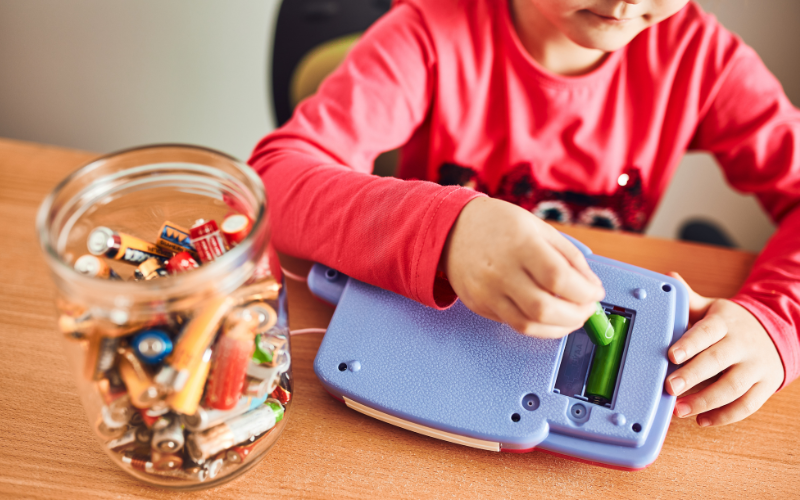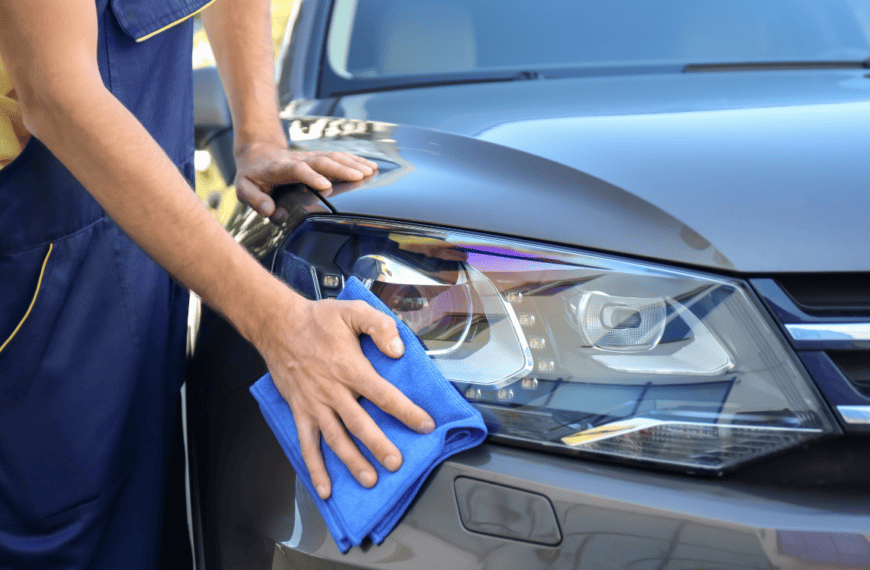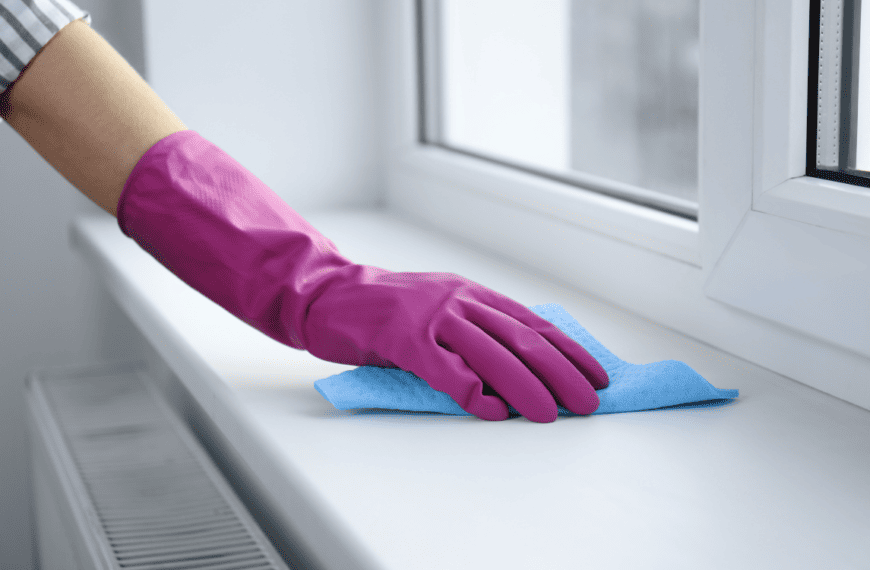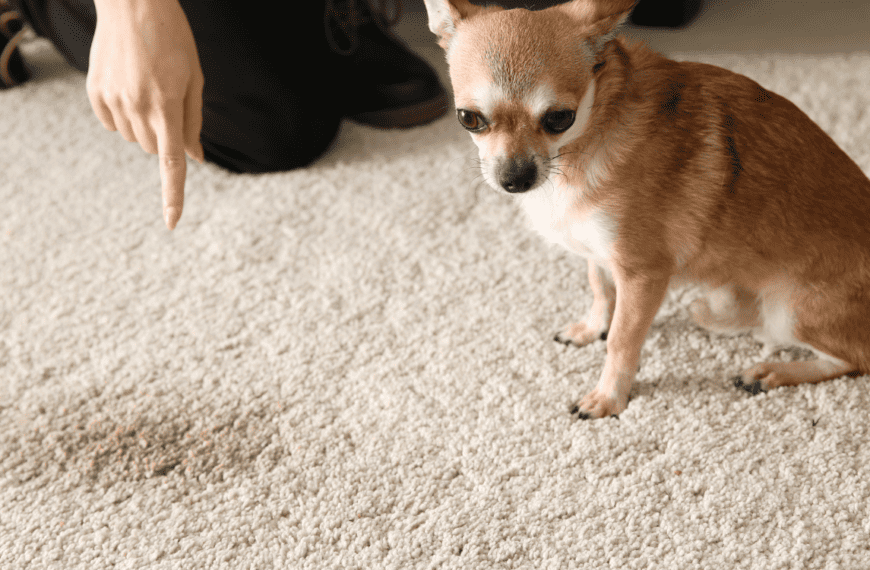My son’s wooden train set was his absolute favorite toy for a solid five-year stretch. I loved this toy (and this stage in life) because of how low maintenance and fun it was. He eventually got a battery operated engine for the set, and it kind of threw a wrench in the simplicity factor. This little engine was quite susceptible to battery corrosion. To keep our house running smoothly, I had to learn how to clean battery corrosion in toys. I can tell you that if you get to corroded batteries before they do too much damage, you have a real chance of saving the toy.
I’ll show you how to clean battery corrosion in toys and what to do about preventing it as well.
Before You Begin: Safety Precautions
When you open the battery compartment of a toy and find that the battery is corroded, you will want to take a few safety precautions. The battery can leak harmful chemicals like potassium hydroxide.
- Turn the toy off, and if you are working on cleaning up battery leakage, make sure the batteries are removed from the toy
- Wear gloves and safety glasses to prevent exposure to irritants and chemicals like potassium hydroxide
- While the battery is corroding in the battery compartment, certain gasses like hydrogen gas are building up; when you remove the cover of the battery casing this gas can release and be irritating
Supplies and Tools for Cleaning Battery Corrosion in Toys
- Safety gloves
- Vinegar
- Toothbrush or cotton swab
- Plastic bag
- Screwdriver
- New batteries
How To Clean Battery Corrosion in Toys (Alkaline Batteries)
To clean battery corrosion in toys that have alkaline batteries, you will need to use vinegar to neutralize the alkaline corrosion that has occurred. Work in a well-ventilated area wearing safety gloves, turn off the toy, remove the battery compartment cover, and take out all batteries. Put vinegar on a cotton swab and clean the corroded terminals, place bad batteries in a plastic bag to contain the mess, and dispose of them according to local guidelines for hazardous waste.
After you clean battery terminals, replace with new batteries and test to ensure the toy is still working. Once complete, wash your hands and wipe down any surfaces you were working on.
Alternative Methods To Remove Battery Corrosion in Toys
If you don’t like working with vinegar, there are a few other methods you can try to remove battery corrosion in toys. I will warn you that vinegar has always been the most effective for me, so these alternative methods could take a little longer or require more steps.
Lemon Juice
Lemon juice is acidic, just like vinegar, and therefore it can break down the corrosion that is left behind in the battery compartment. Lemon juice won’t be as strong as vinegar, so I recommend using a toothbrush for this method to make sure it’s really cleaning up the mess from the old batteries.
- Wear protective gloves and remove old batteries from the toy
- Cut a lemon in half and squeeze the juice into a small container
- Dip a toothbrush directly in the lemon juice and use it to scrub the area where the corroded battery did damage
- Rinse with a cotton swab that has fresh water on it
- Dry the compartment completely with a paper towel
- Replace with new batteries
Rubbing Alcohol
If you have been wondering if you can use rubbing alcohol to clean battery corrosion, you can. Isopropyl alcohol or rubbing alcohol is a solvent that is known for breaking down corrosion on household batteries. One of the great things about rubbing alcohol is that it is incredibly fast drying, making the cleaning process a little easier.
- Set the toy on a rag or paper towel to protect any of your surfaces
- With protective gloves on, turn off the toy and remove the battery to avoid any trouble with electrical energy traveling to you
- Take a cotton swab with rubbing alcohol on the end and clean the internal battery compartment
- Let the rubbing alcohol dry, and repeat, rubbing alcohol will dry up very quickly; you don’t need to soak the area
- Repeat this process a few times until there is no longer visible corrosion
- When everything is completely dry, put new batteries back in
Noco E404 Battery Terminal Cleaner and Spray
If a commercial product works best for you, the Noco E404 Battery Terminal Cleaner and Spray can be a great solution. What I like about this product is that it also turns pink if battery acid is present, letting you know to use caution as you proceed.
- Put on safety gloves and work in a well-ventilated area
- Remove battery compartment and batteries and put the batteries in a container for disposal
- Spray the Noco E404 into the battery terminal and let it sit for a few minutes
- Rinse with water or cotton swabs that are slightly damp
- Allow time for the battery compartments to dry
- Replace with new batteries
How Do You Clean Electronics After Battery Corrosion? (Acidic Batteries)
When you are dealing with acidic batteries, you have to neutralize the acid. The best thing for this is an alkaline solution like baking soda. For this method, you will need baking soda, a cotton swab, and water.
- Create a paste using three teaspoons of baking soda and one teaspoon of water
- Open the battery compartment and remove and discard all batteries
- Coat the battery terminals with the baking soda paste you created and allow it to sit for 20 minutes
- Use a cotton swab or old toothbrush to scrub the battery terminals and remove battery corrosion
- Rinse if needed to remove residue and baking soda
- Dry completely with paper towels, inspect for damage, and replace with new batteries
If you are a more visual person, watch this video on how to clean corroded battery contacts:
What Is Battery Corrosion?
Battery corrosion is an effect that occurs when batteries start to leak or deteriorate. Alkaline batteries have an electrolyte, potassium hydroxide, and the chemical reaction between that and the external metal canister is what creates corrosion.
Sometimes, you don’t know a toy has battery corrosion until you take the batteries out; other times, there will be a white or green residue forming around the battery compartment.
When left untreated, toys can stop working as the electrical current cannot run through the toy properly.
What Dissolves Battery Corrosion?
Battery corrosion can be dissolved using vinegar. To keep the mess to a minimum, put a little vinegar on a cotton swab or even an old toothbrush and clean the area that is coated in the battery corrosion.
Why Do Batteries Corrode in Toys?
The most common reason that batteries corrode in toys is that they are old or expired, and the destruction and breaking down is actually occurring inside the battery. When this happens, the battery fluid can start to leak and it causes corrosion.
In addition, there are times when exposure to moisture can cause batteries to go through a series of electrochemical reactions that create corrosion. Store batteries and toys with batteries in dry areas only.
Reactions can also occur when battery compartments get dusty or dirty. The additional elements in the battery compartment can accelerate the corrosion process and damage the metal contacts inside the toy.
When Is a Toy Beyond Repair?
When a toy is beyond repair, your child will probably bring their toy over to you, and you will notice that the corrosion has truly spread throughout the entire compartment. In some cases, the batteries discharge may actually be all over the toy itself.
Even after cleaning and replacing both old and new batteries that were in the toy, the toy itself may no longer work. This is when you are likely beyond repair. In addition, especially in toys for babies, if you can’t clean the entire area and get rid of all corrosion, I recommend getting rid of the toy.
How To Prevent Battery Corrosion in Toys
Once battery corrosion makes its way into toys, it can really do some damage. In addition, I don’t like the idea of these electronic devices and toys sitting around my house with potentially hazardous chemicals and hydrogen gas inside.
Here is what I do to prevent corrosion.
- Use Grade A Batteries when you can
- Check the dates on all batteries to ensure they are not expired
- Make a point to change out and inspect all toys with batteries at least once per year
- Try not to reuse batteries that are close to their expiration date in case you don’t have a chance to check them later
- Avoid putting toys and other electronic devices in extreme temperatures (below 32°F or above 113°F) as it can deteriorate the battery casing
If the battery continues to be a persistent issue by causing corrosion, use silicone or petroleum jelly to protect terminals after you remove the corrosion
Frequently Asked Questions (FAQ)
Are corroded battery terminals dangerous?
Corroded battery terminals are not to be taken lightly. They can leak harmful chemicals like potassium hydroxide and even release irritating hydrogen gas. Safety precautions, including gloves and safety glasses, are non-negotiable. Handle with care to avoid risks and prolong the life of the toy.
Can corroded terminals permanently damage the toy?
Corroded battery terminals can lead to permanent damage in toys. The corrosion can obstruct the electrical current, causing the toy to malfunction. If left untreated, the corrosion can spread throughout the battery compartment, rendering the toy irreparable. Immediate action is crucial to salvage the toy and ensure its continued functionality.
How do I dispose of corroded batteries?
To dispose of corroded batteries, place them in a plastic bag to contain any leakage. Follow local guidelines for hazardous waste disposal. Never discard them in regular trash. Proper disposal is essential for both environmental safety and compliance with waste management regulations. Batteries are banned from trash in California; they must be taken to a Household Hazardous Waste disposal facility, a universal waste handler, or an authorized recycling facility.









